Silver lace vine identification and control
Fallopia baldschuanica, syn. Polygonum aubertii, Polygonaceae Family
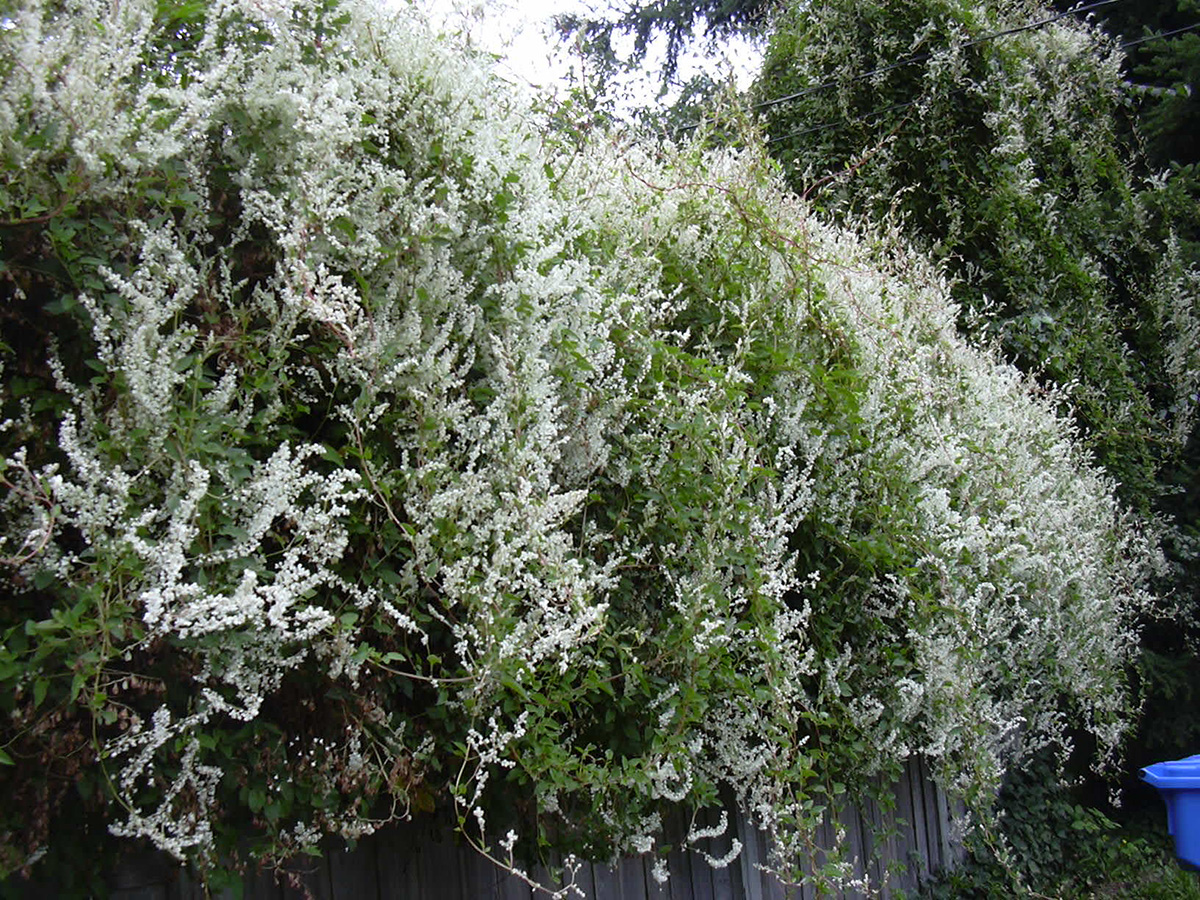
Silver lace vine (Fallopia baldschuanica, syn. Polygonum aubertii) is a fast-growing perennial vine that has been found to escape cultivation and grow rampantly up and over other vegetation including even very tall trees. It has clusters of small white flowers, twining or trailing stems and somewhat arrowhead-shaped leaves. It looks similar to bindweed but with clusters of much smaller flowers and woody stems.
It is sold as a “fast-growing screen” and it will grow aggressively to cover over structures and other plants. It is closely related to Japanese knotweed and has been known to hybridize with that species in Great Britain. Silver lace vine is native to China, Russia, Kazakhstan and other parts of western Asia. It is also called Russian-vine, Bukhara fleeceflower, silver fleeceflower vine, Chinese fleecevine, Chinese bindweed and mile-a-minute vine.
In King County, known escaped populations of silver lace vine mostly occur in developed areas in and around Seattle, near where it has been planted or dumped as yard waste. Although the populations are few in number, they are large in size and would be difficult to control without harming other vegetation. Limiting further spread of this plant is the key to avoiding significant impacts.
Legal Status in King County, Washington
Silver lace vine is classified as a Weed of Concern by the King County Noxious Weed Control Board and is not on the Washington State Noxious Weed List. Property owners are not required to control it, although control is recommended in areas being restored to native plants. People are encouraged to avoid planting silver lace vine in King County. Alternatives are recommended in the Garden Wise booklet, available for download or by contacting the noxious weed program. For more information on the legal status of noxious weeds in King County, see Noxious weed lists and laws.
Identification (see below for additional photos)
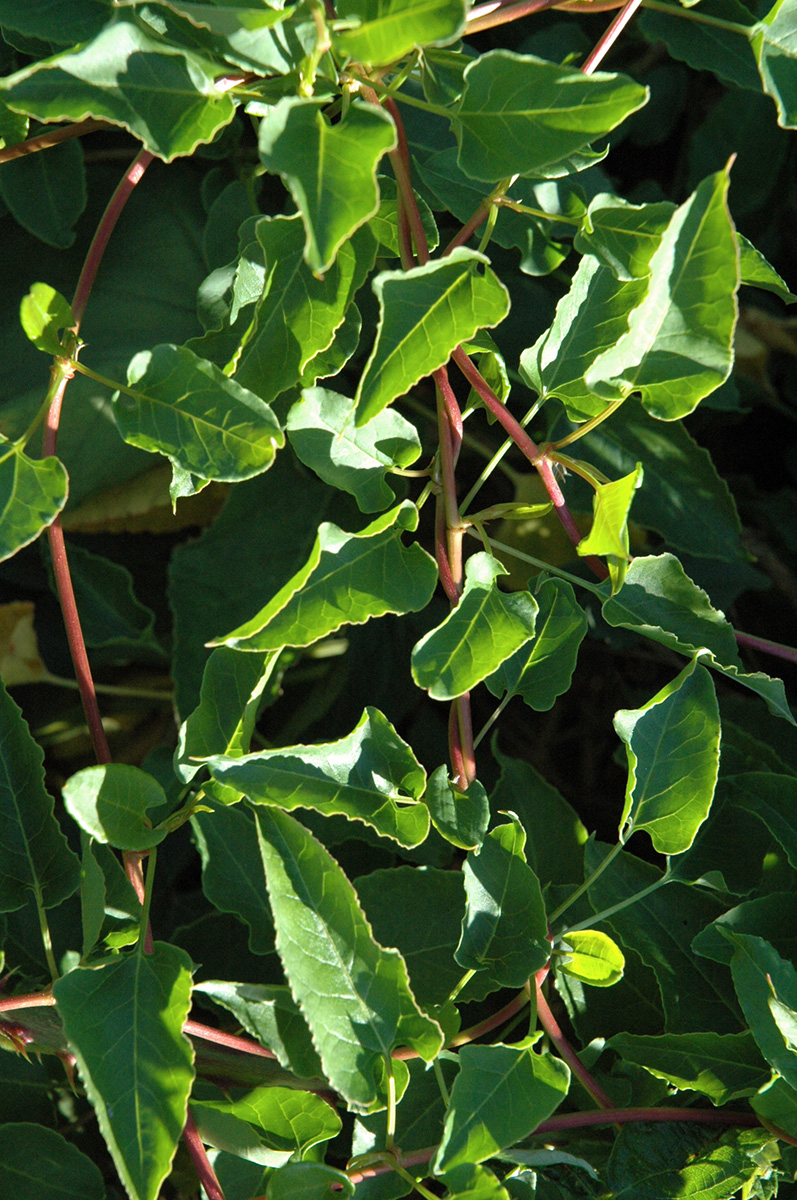
- Perennial vine with long, twisting stems that are reddish-green in color, woody near the base, 25 to 35 feet long (up to 10 meters).
- Leaves somewhat arrowhead-shaped, pointed oval to nearly triangular in shape, 1.5 to 4 inches long on twisting leaf stalks (petioles), alternate, untoothed and simple.
- Flowers are in branched clusters (panicles) that are slender, drooping or spreading, with numerous small white flowers, each cluster 6-8 inches long.
- New growth is reddish in color.
- Blooms mid-summer to early fall (August-September), fragrant, attract honeybees.
- Individual flowers are under ½ inch (1 cm), hang on short stalks (pedicels), have five petal lobes and are white to greenish or pale pink, sometimes turning bright pink as the fruits develop.
- Fruits are pinkish, somewhat triangular shaped and fairly conspicuous in the fall.
- Seeds shiny black three-sided achenes (a hard, dry fruit that doesn’t split open at maturity).
- Look-alikes to silver lace vine also found in western Washington:
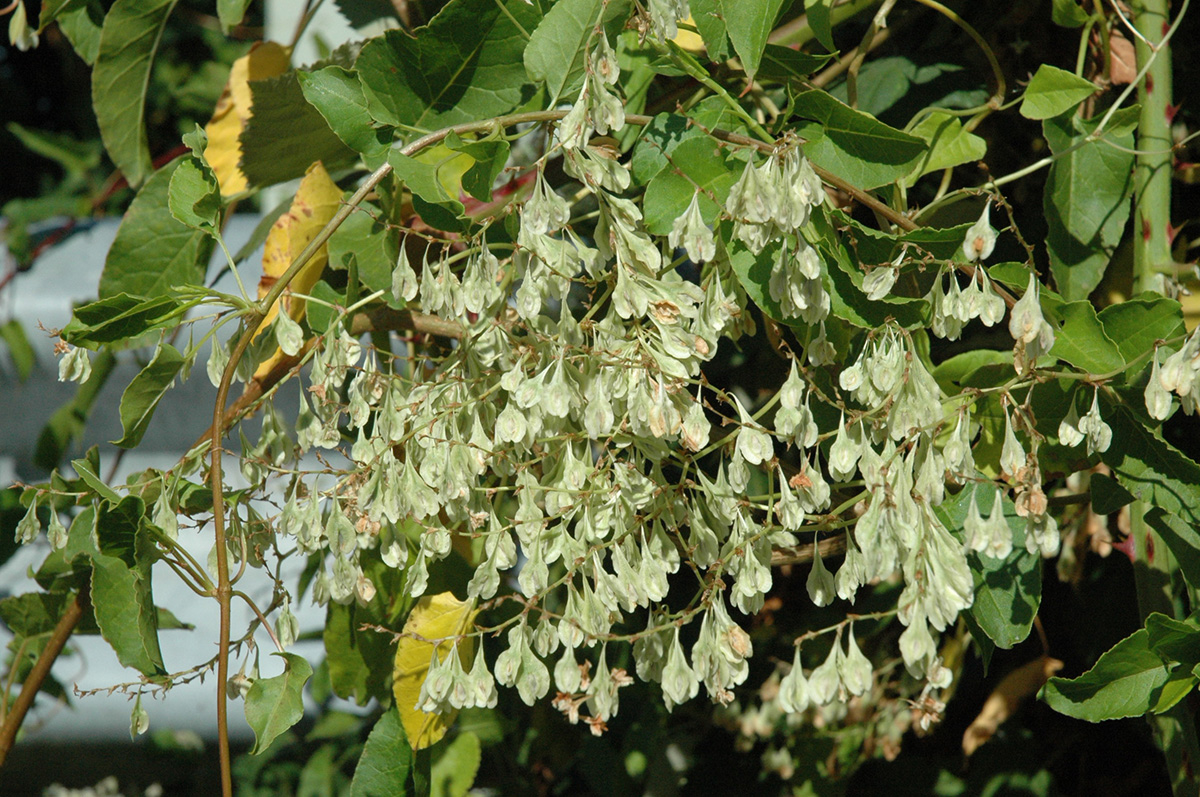
Toxicity
Like many other plants in the knotweed family, silver lace vine contains oxalates that if eaten in large amounts may cause kidney disease or low calcium or magnesium levels in livestock, dogs or other animals.
Habitat and impact
Silver lace vine is found growing on fences, hillsides, trees and on other vegetation in a variety of habitats. It tolerates a wide range of soil conditions and is most abundant in full sun to part shade. Because it grows over other plants, it can suppress their growth and weigh them down. It is highly branched and difficult to remove from other plants without injuring them. It grows over low-lying vegetation as well as climbing high into trees and growing over the tops of tall plants, even other invasive plants such as blackberry and knotweed.
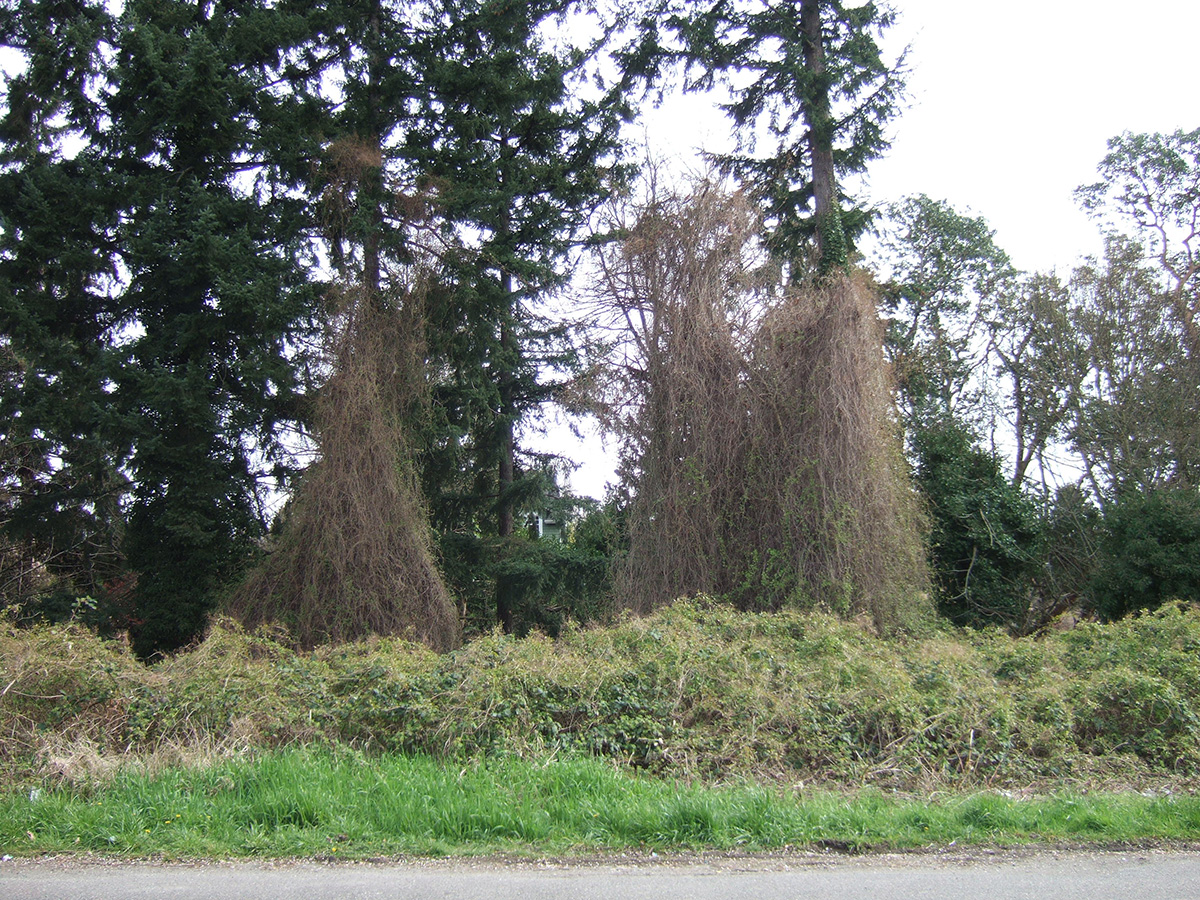
Growth and reproduction
Silver lace vine grows by twining, with stems and leaf stalks twisting around other vegetation or physical structures like fences. Silver lace vine spreads by seed, rhizomes and stem cuttings, similar to the large, invasive knotweed species that it is related to. Blooms in summer and early fall. It is fast growing and can increase in size by 15 feet in a single year.
Control
Prevention and cultural methods To prevent the spread of silver lace vine, do not dump fragments in yard waste piles and avoid planting it where it can escape into natural areas. Where possible, use alternative, non-invasive species in landscapes. For existing populations, monitor areas around the edges to prevent further spread.
Manual control Physical removal is difficult because the plant twists around other plants and structures. It can re-grow from stem fragments and rhizomes so take care to remove all plant parts and dispose of them in a yard waste bin or in a similar contained area where plant fragments won’t be able to re-grow.
Mechanical methods Cutting silver lace vine does not control it. Plants will readily re-grow after even hard pruning.
Chemical control It is unknown which herbicides are most effective on this plant. Because it is closely related to invasive knotweed, products that are effective on knotweed may be effective on silver lace vine such as glyphosate or imazapyr. However, because silver lace vine grows on other vegetation, it might not be possible to treat it chemically without damaging plants it is growing on. To be selective, pull vines away from other plants before spraying or wipe herbicide onto foliage. Because this is a perennial vine with rhizomes, it may be most effective to spray plants when they are in bud or early flower or later in the season when seeds starts to form. The key to control is to move herbicides into the rhizomes so a slow-acting herbicide may be the most effective.
Know before you spray! Some products are limited to certain sites and land uses and may be restricted in some cases. Always read the label carefully to make sure the product is safe and appropriate for your site and intended land use. Use the recommended rates and timing for your site. Avoid spraying where there is a chance that herbicide will enter a waterway or wetland unless you are using a state-approved aquatic herbicide and have a permit and license to do so. Some local jurisdictions restrict herbicide use in certain areas, so make sure to refer to the local regulations regarding herbicide use.
Disposal of plant material Plants can be disposed of in yard waste bins. Do not dispose of plants in natural areas where they can spread from yard waste piles.
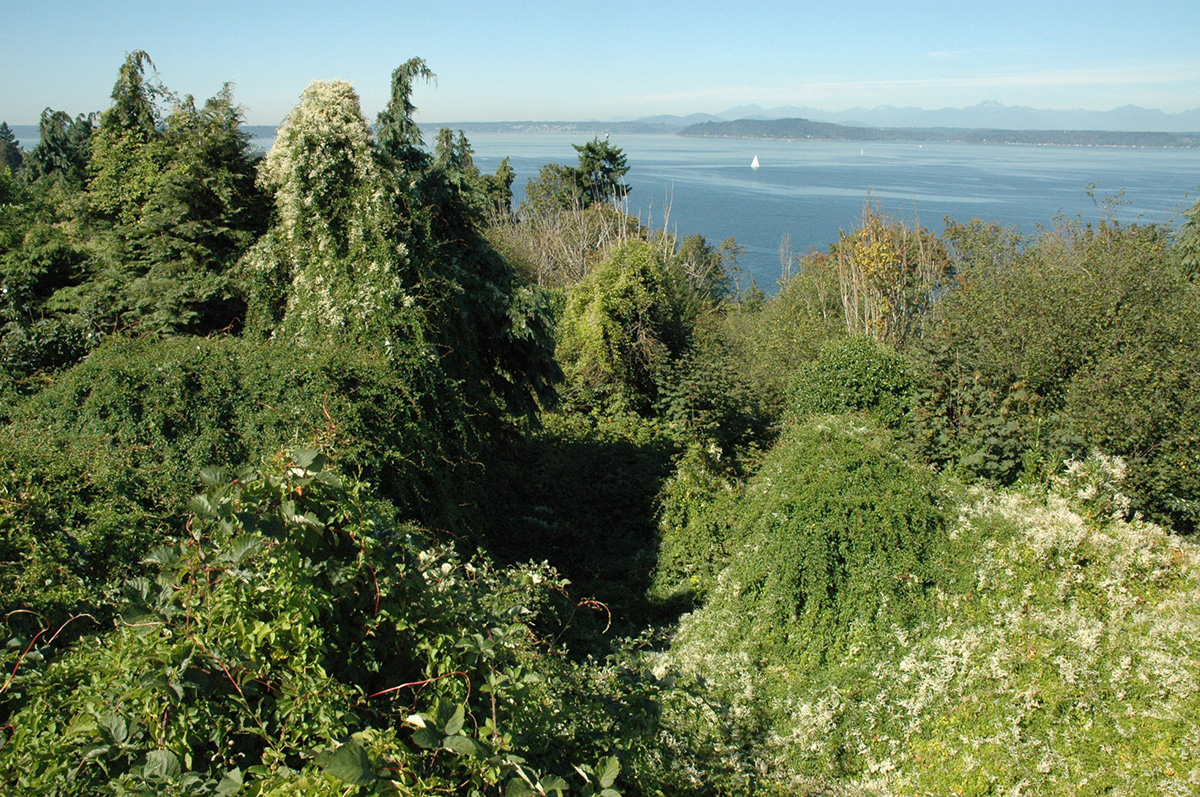
Additional information on silver lace vine
- Washington State Noxious Weed Board Monitor Plants
- Burke Herbarium Image Collection
- The Morton Arboretum
- Go Botany, New England Native Plant Trust
What to do if you find this plant in King County, Washington
Silver lace vine is not a regulated noxious weed in King County so property owners aren’t required to control it. However, it can become invasive and is very difficult to control once it escapes into natural areas, so it would be helpful to report locations to the property owner or public agency responsible for the area. To report locations online, use our Report a Weed form or download King County Connect on your Android device.
Additional silver lace vine photos
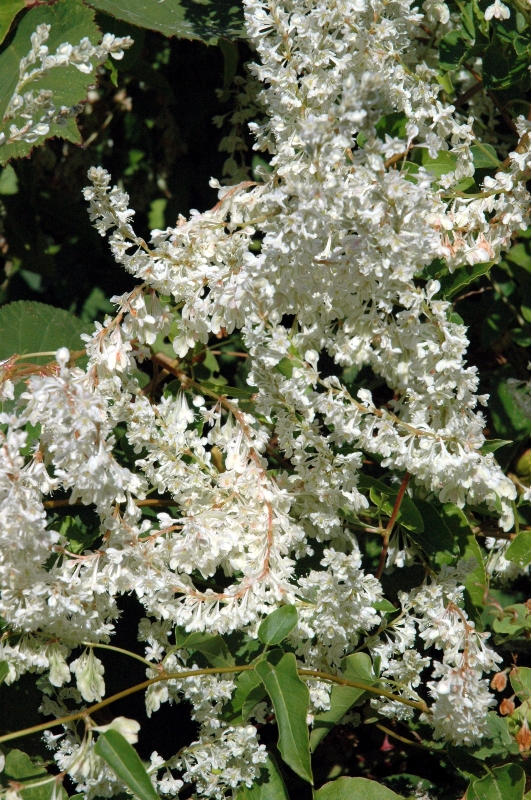
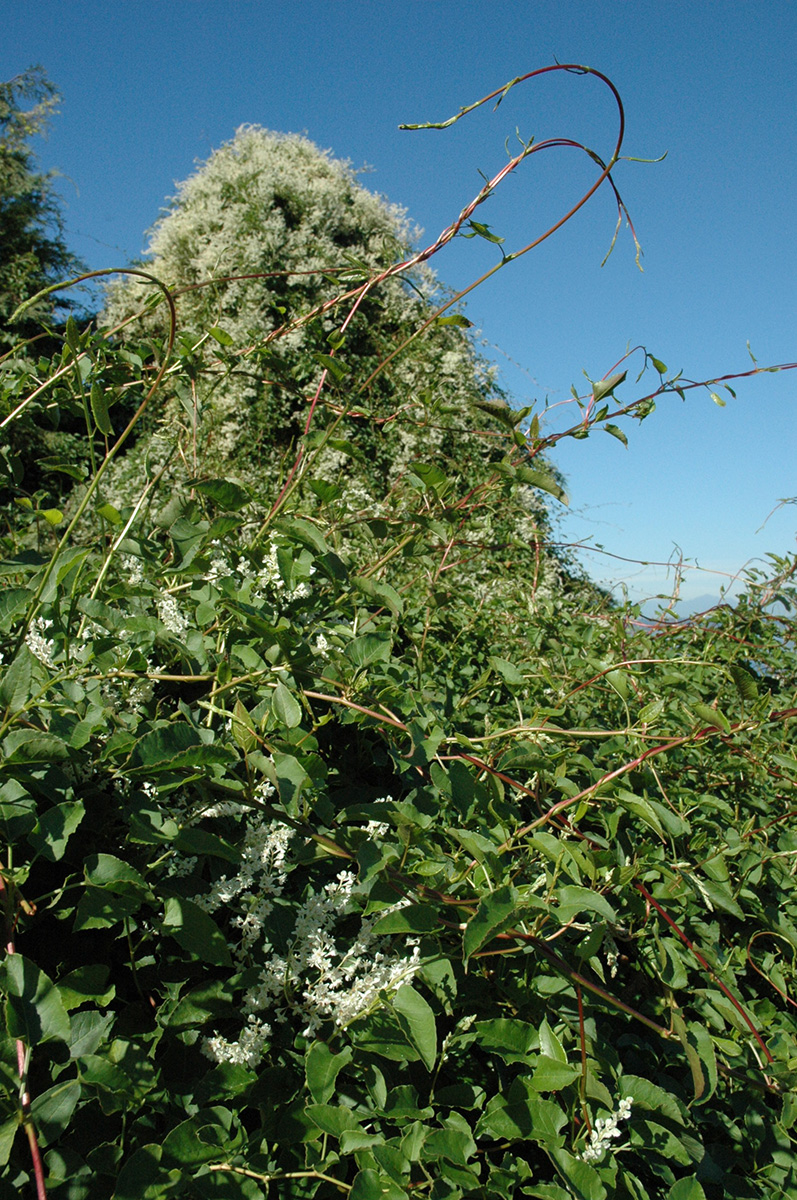
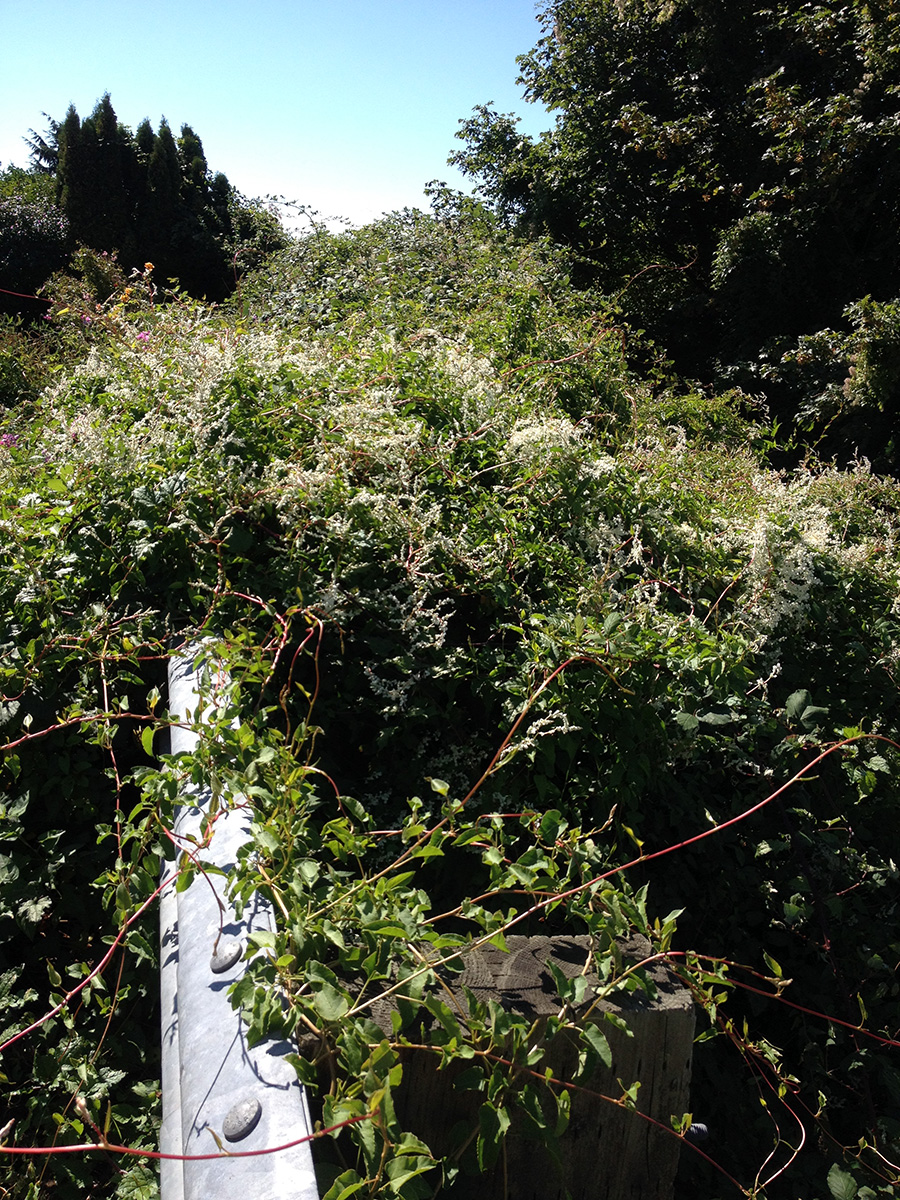
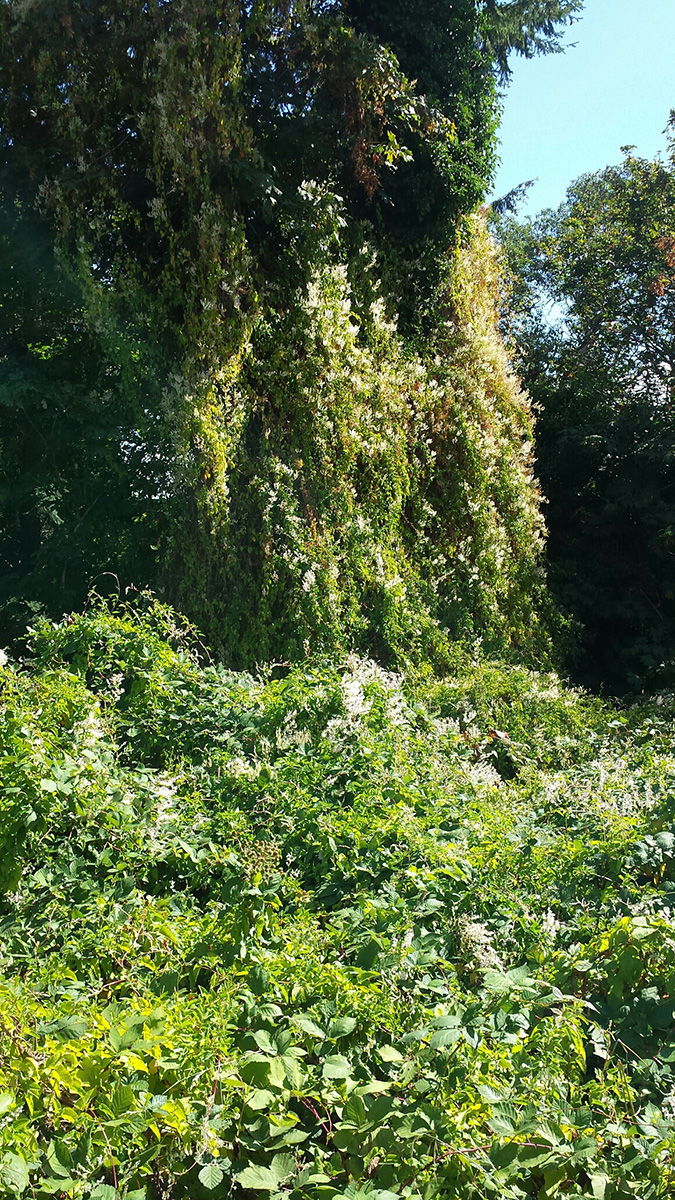 Photo by Phil Renfrow
Photo by Phil RenfrowReport noxious weeds in King County, Washington
- Please notify us through our online infestation form
Locate noxious weeds in King County, Washington
- Use our interactive noxious weed map
Related information
Related agencies
Program offices are located at 201 S. Jackson St., Suite 600, Seattle, WA 98104. To contact staff, see the Noxious Weed Control Program Directory, send an email, or call 206-477-WEED (206-477-9333).

 Translate
Translate